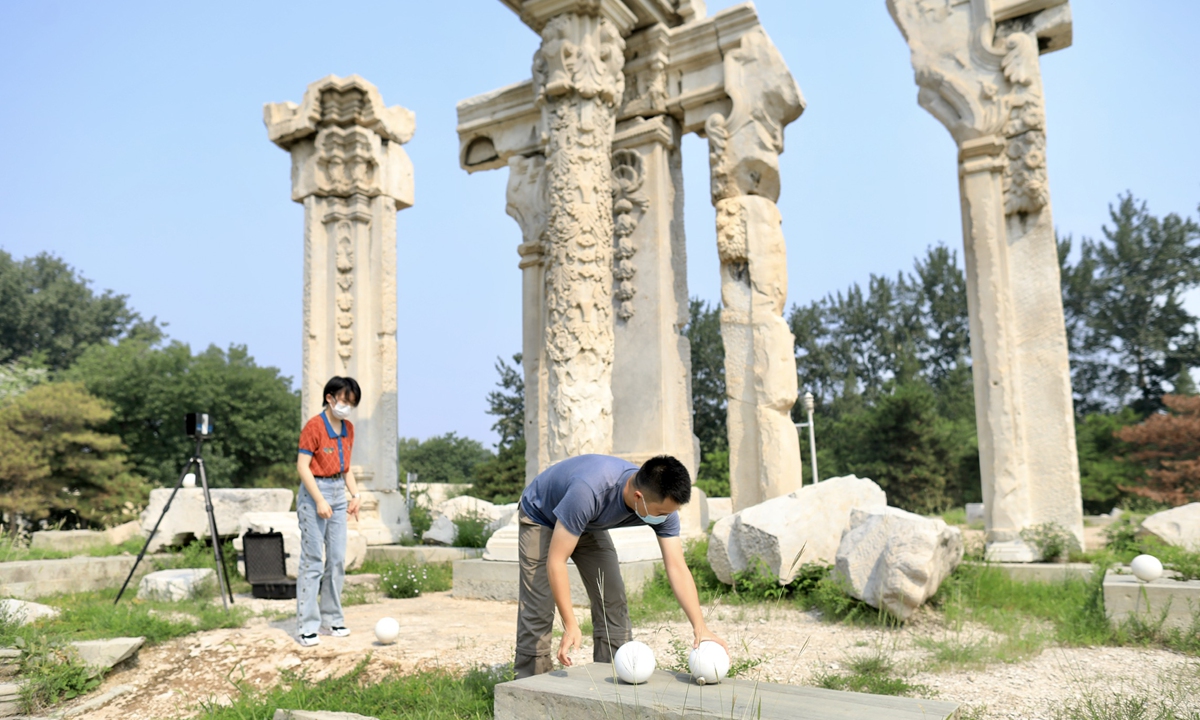Beijing’s Old Summer Palace to ‘live forever’ in digital form

The research team from the Peking University in the Old Summer Palace Photo: IC
The administration office is cooperating with the College of Archeology and Museology of Peking University to digitalize two sites in the park, Yuanyingguan and Dashuifa sites, the office told the Global Times on Friday.
Shang Jingyu, an engineer from Peking University, said that the digital archiving work will use many technologies such as laser scanning and photogrammetry to collect data of the cultural relics.
The research team placed small white balls that the laser scanners could pick up around the Yuanyingguan site, a European-style palace that was ruined during the late Qing Dynasty (1644-1911), in order to digitize the surface with a low margin of error, according to a report of China News Service.
“For such a large area as the ruined site, the margin of error is about five centimeters, but for a single cultural relic, we can limit the margin of error between 0.5 centimeter to one centimeter,” Shang said.
Yuanyingguan was built entirely using white marble during the reign of the Qing Dynasty’s Qianlong Emperor. The decorations on the building combined Chinese and European styles, but it was destroyed by invaders in 1860 and now only ruins remain.
The administration office told the Global Times that stone-made cultural relics that remain exposed outdoors are easily damaged by natural factors such as wind and rain, so scanning these stone ruins for a digital database is a necessary step to preserve them for future generations.
Chen Hui, head of the Archeology Department of the Old Summer Palace, noted that the digitization of the ruins is the best way to preserve their present situation.
Chen added that the digital archiving work will be able to provide visitors a chance to appreciate these relics more closely and clearly.
The Dashuifa site is one of the most popular sites for visitors to the Old Summer Palace. Visitors often take photos in front of the site, but to protect the cultural relic visitors are not allowed to see it from the rear.
Dashuifa was designed by foreign court painters Giuseppe Castiglione, known in China as Lang Shining, and Michel Benoist, Chinese name Jiang Youren, and made by Chinese craftsmen. Its combination of Western and Chinese styles reveals the aesthetic tastes of the Qianlong Emperor at that time.
“There is a large baroque style shell in the middle of the western wall, and these Western-style rolls of grass.
The combination of these parts looks like the mythological Chinese phoenix,” Chen said. “It is very beautiful, but even if visitors come to the park, they cannot see them due to protection rules.”
However, after the digital archiving work is completed, people will be able to appreciate all the fine details of these cultural relics on their computers or phones.